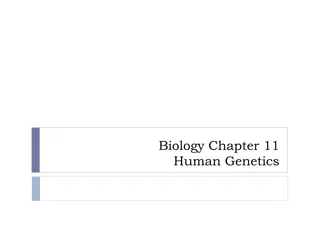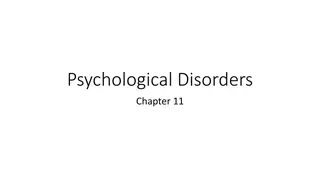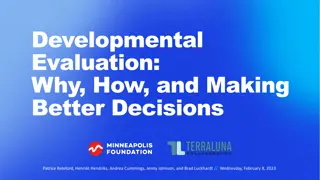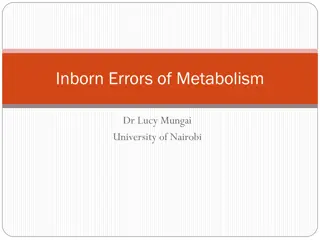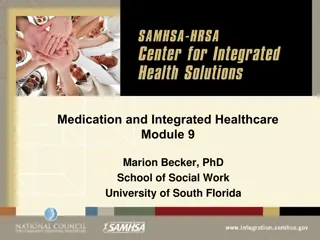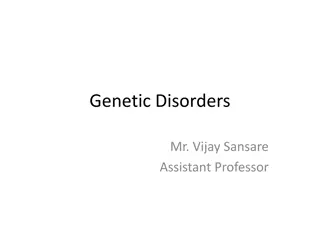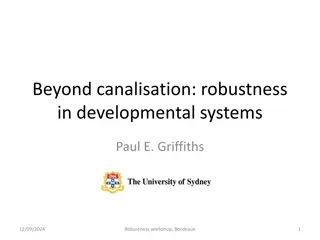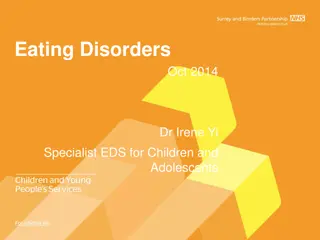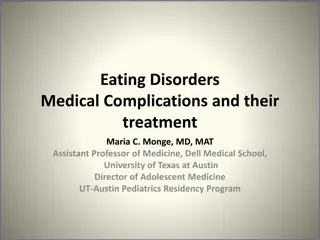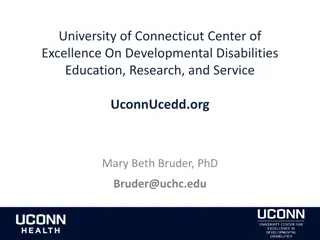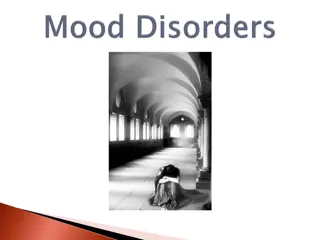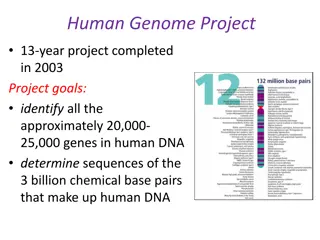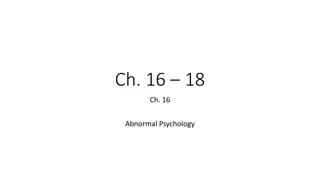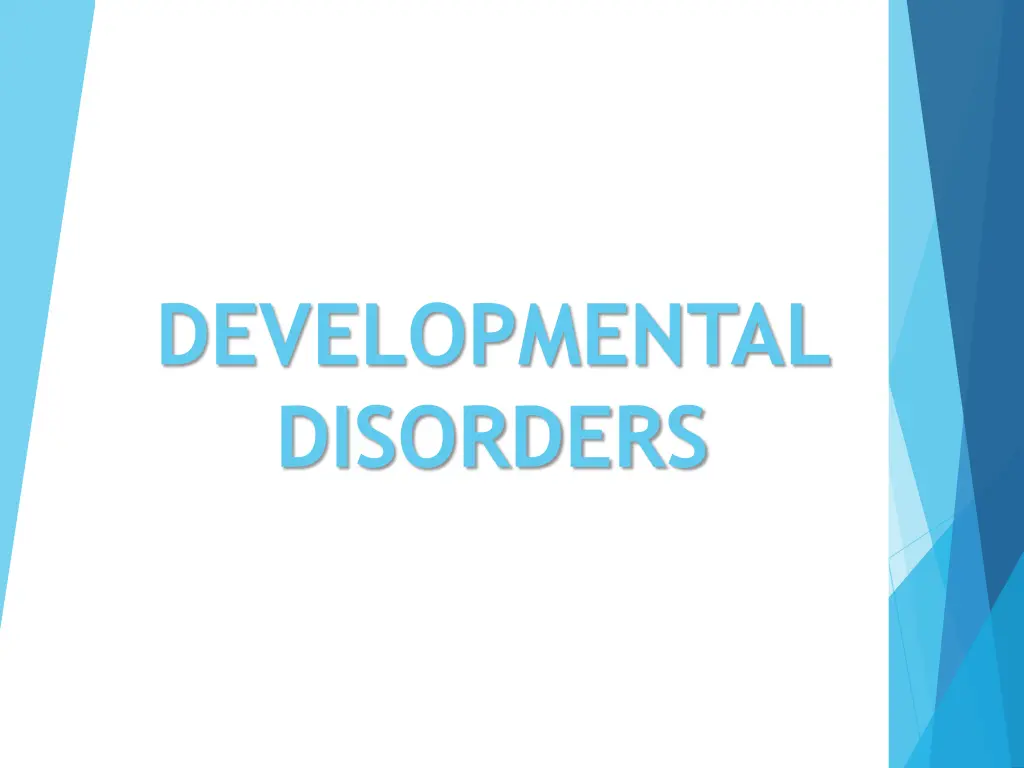
Understanding Developmental Disorders: Impact, Causes, and Types
Developmental disorders encompass impairments in physical, cognitive, language, and behavioral development, affecting everyday functioning and lasting throughout a person's lifetime. They can impact mobility, cognition, independence, language, social skills, and more. These disorders can stem from environmental factors, genetics, stress in early childhood, injury, trauma, or other medical conditions. Common developmental disorders include learning disabilities, communication disorders, autism spectrum disorders, ADHD, and developmental coordination disorder.
Download Presentation

Please find below an Image/Link to download the presentation.
The content on the website is provided AS IS for your information and personal use only. It may not be sold, licensed, or shared on other websites without obtaining consent from the author. If you encounter any issues during the download, it is possible that the publisher has removed the file from their server.
You are allowed to download the files provided on this website for personal or commercial use, subject to the condition that they are used lawfully. All files are the property of their respective owners.
The content on the website is provided AS IS for your information and personal use only. It may not be sold, licensed, or shared on other websites without obtaining consent from the author.
E N D
Presentation Transcript
DEVELOPMENTAL DISORDERS
Introduction Developmental disorders are impairments in a child s physical, cognitive, language, or behavioral development. impact everyday functioning and usually last throughout a person s lifetime. affect physical abilities, such as vision, and mental abilities, such as learning. affect multiple body parts or systems.
These disorders may impact areas such as: Mobility Biological function Cognition (learning) Physical or emotional independence Language The five senses and perception Social skills
CAUSES Environment Genetics Stress in early childhood present before birth and last throughout life. also occur as the result of injury, trauma, or other medical factors during childhood.
DEVELOPMENTAL DISORDERS Learning disabilities Communication disorder Autism spectrum disorders Attention deficit hyperactivity disorder (ADHD) Developmental coordination disorder
COMMUNICATION DISORDER Communication disorders include problems related to speech, language and auditory processing. Some causes of communication disorders include hearing loss, neurological disorders, brain injury, mental retardation, drug abuse, physical impairments such as cleft lip or palate, emotional or psychiatric disorders, and developmental disorders.
AUTISM SPECTRUM DISORDER Autism spectrum disorder (ASD) is a lifelong development disability characterized by difficulties in social interaction, communication, restricted and repetitive interests and behaviors, and sensory sensitivities. Core problems 1) Difficulty with socialization and communication; 2) Odd interests and behavior; 3) Problems with attention and self-regulation.
CAUSES Genes Environmental triggers Other health conditions Muscular dystrophy a group of inherited genetic conditions that gradually cause the muscles to weaken Down's syndrome a genetic condition that typically causes a learning disability and a range of physical features
Cerebral palsy Conditions that affect the brain and nervous system, causing problems with movement and co-ordination Infantile spasms A type of epilepsy that develops while a child is still very young (usually before they're one year old)
Neurofibromatosis A number of genetic conditions that cause tumours to grow along the nerves (the main types neurofibromatosis type 1 and neurofibromatosis type 2) The rare genetic conditions fragile X syndrome, tuberous sclerosis and Rett syndrome
TYPE OF SUPPORT Requires support. People at this level may be more dependent. Challenges with social interaction, change, or uncertainty may still be hard to manage without some support. Requires substantial support. Some social interaction and change may be manageable for people at this level, but a consistent level of support is necessary. Requires very substantial support. People in this category may have minimal speech and social interaction. Handling change may be a significant challenge.
Autism symptoms Social skills and interaction Nonverbal communication Relationships and social connection
Social skills and interaction Hand gestures during a conversation and figures of speech can be hard to decode for some autistic people. For autistic people who need higher levels of support, it can be harder to initiate or respond to social interaction. many autistic people speak in full sentences, other people might be nonverbal meaning they tend not to speak out loud and communicate in other ways.
Nonverbal communication Nonverbal communication is how people communicate with each other without words. Autistic people tend to engage in nonverbal communication differently than non-autistic people. Autistic people might have difficulty with: eye contact decoding facial expressions or hand gestures expressing their thoughts and feelings matching the facial expressions of behaviors of other people
Relationships and social connection find it difficult to connect emotionally with other people, especially non-autistic people. Difficulties adjusting speech and behavior to match the mood of a conversation might make it harder for some autistic people to start or maintain a relationship. not participating in games that involve imagination. a lack of interest in making friends, although this is not true for all autistic people.
Patterns in behavior and interests Stereotyped behaviors (repetitive behavioral patterns) Rigid routines and dislike of change narrowed, or strong and specific focus Differences in responses to surroundings
Stereotyped behaviors Stereotyped behaviors are behaviors that are repeated over and over but don t seem to have a clear purpose. Still, these behaviors do have a purpose - a form of self-soothing (stimming) These behaviors can involve: hand flapping finger flicking coin spinning lining up objects other repeated actions repeat the speech of other people (echolalia)
Rigid routines and preference for structure An autistic, might feel strongly about certain daily routines, habits, or rules. A change to these routines that seems insignificant to someone else might feel like a big impact for him/her. For example, a specific walking route or eating a certain brand of cereal. Any change can bring feelings of instability, feeling lost, or not knowing what to do next.
Narrowed focus, interests, and preoccupations Autistic people may have a strong focus or narrow interest in certain topics or subjects. For example, preference to play with a single toy. an area of interest in a specific topic that they know a lot about. Hyper focus on certain activities and restrictive food intake are also common.
Responses to stimuli in the environment Over or under sensitivity to stimuli in the environment Hypersensitivity: might cover their ears in a room where multiple people are talking at once. Hyposensitivity: might not react to pain or changes in temperature. Some autistic people may also be drawn to certain sensory experiences, including: textures, smells, tastes, sights, sounds
Diagnosing autism spectrum disorder Mostly, autism is diagnosed during childhood criteria for an autism diagnosis: impact multiple areas of life have been present since early childhood make areas of life, like work or relationships, harder to manage aren t better explained by an intellectual disability also note whether it s accompanied by intellectual and/or language impairment or with catatonia.
DEVELOPMENTAL COORDINATION DISORDER Also known as developmental dyspraxia is a chronic neurological disorder beginning in childhood that can affect planning of movements and co-ordination as a result of brain messages not being accurately transmitted to the body
SYMPTOMS Have difficulty moderating the amount of sensory information that their body is constantly sending them. Poor memory Poor sense of direction Poor motor control
Treatment for developmental disorder Clinical therapies Complementary therapies Biomedical treatments Family support Service delivery models

